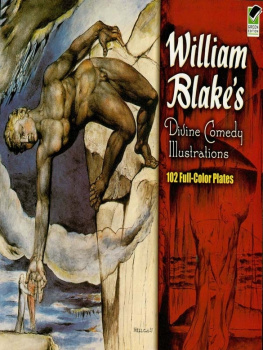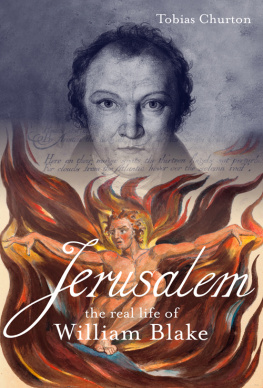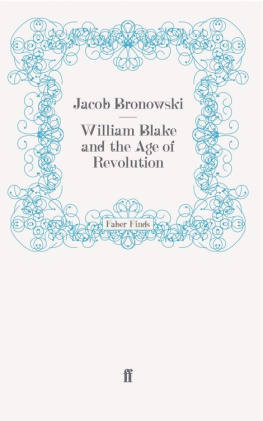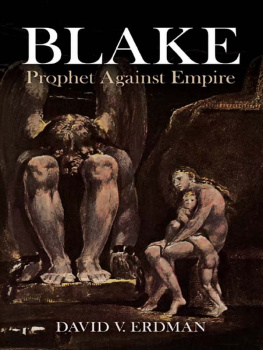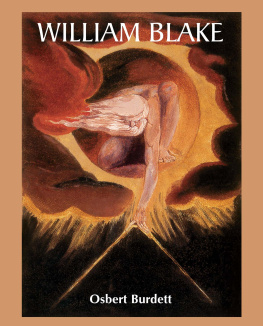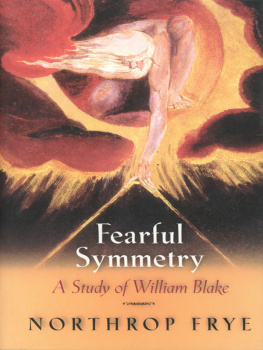A
BLAKE
DICTIONARY

S. Foster Damon
Courtesy of the John Hay Library, Brown University
A
BLAKE
DICTIONARY
The Ideas and Symbols of William Blake

S. Foster Damon
UPDATED EDITION
with a new foreward and
annotated bibliography
by Morris Eaves
Dartmouth College Press
Hanover, New Hampshire
DARTMOUTH COLLEGE PRESS
An imprint of University Press of New England
www.upne.com
1965, 1988, 2013 Trustees of Brown University
foreword and annotated bibliography 2013 Dartmouth College Press
All rights reserved
For permission to reproduce any of the material in this book, contact Permissions, University Press of New England, One Court Street, Suite 250, Lebanon NH 03766; or visit www.upne.com
Cover illustration: The Lovers Whirlwind, Dantes Divine Comedy, Hell, Canto V, 37138, c. 1825 (detail).
Library of Congress Cataloging-in-Publication Data
Damon, S. Foster (Samuel Foster), 18931971.
A Blake dictionary: the ideas and symbols of William Blake / S. Foster Damon; updated edition with a new foreword and annotated bibliography by Morris Eaves. Updated ed.
p. cm.
Includes index.
ISBN 978-1-61168-443-8 (pbk.: alk. paper)
ISBN 978-1-61168-341-7 (ebook)
1. Blake, William, 17571827Dictionaries. 2. Symbolism in literatureDictionaries. I. Eaves, Morris, 1944 II. Title.
PR4146.A24 2013
821.7dc23
2012043195
FOR
GEOFFREY KEYNES
to whom all Blake lovers are
indebted permanently
Forgive what you do not approve, & love me
for this energetic exertion of my talent.
BLAKE JERUSALEM 3
Foreword
Blake as Conceived: Lessons in Endurance
The study of Blake inevitably leads to controversy;
the reader of this dictionary might never guess that
there was anything but an agreed orthodoxy.
Guides to a New Language, 3 October 1968
S Foster Damon was the young Turk of Blake studies when William Blake: His Philosophy and Symbols was published in 1924. He was the patriarch of Blake studies (Bloom review, 24) when A Blake Dictionary: The Ideas and Symbols of William Blake was published in 1965. As I revise this foreword, Philosophy and Symbols is approaching its ninetieth birthday, A Blake Dictionary its fiftieth, and Damon has been dead since 1971. Its fair to ask what A Blake Dictionary is good for at this late hour. Though Damon loved to pore over patriarchal tomes himself, he would have understood that people entering strange territory want up-to-date guidebooks. When I started getting serious about Blake, my guides were Northrop Fryes Fearful Symmetry (1947), David Erdmans Blake: Prophet against Empire (1954), and Damons Dictionary. That was 1968, after all, and the Dictionary was nearly new. But today Id still endorse my own experience: if Blake is where youre going, Frye, Erdman, and Damon should be your guides. As an introductory offer they remain unbeatable. To understand the power of the Dictionary in this durable trio, we start with the recognition that Damons lifetime coincided with the incorporation of Blake into legitimate fields of study. The process began well before Damon arrived on the scene and may continue indefinitely, but the crucial decades were those bracketed by Damons Blake books. From the 1920s through the 1960s, various factors cooperated to assign to the name William Blake a set of attributes and a location in history. The rough consensus achieved during Damons lifetime is by and large the one we are still operating with today. It leads us to expect to find William Blake at home in one of the six slots allotted to the so-called major English Romantic poets in standard textbooks devoted to the standard subject of English Romantic poetry. To the extent that the Blake of Damons Philosophy and Symbols is the same as the Blake of the Dictionary in most essentials, the Dictionary is an annotated index to its own predecessor. The sustained equilibrium in the meaning of Blake that made it possible for a book published in 1965 to represent a book published in 1924 has less to do with the consistency of the author than with the consistency of the scholarly institutions appraising him. Not that he or they never changed or never learned anything new during all those years. But the fact that the Blake that Damon calls to memory for his Dictionary is very largely the same Blake that Damon had first assembled for his Philosophy and Symbols four decades earlier confirms not just Damons stubborn faith in his own critical powers but also the capacity of institutions to retain what they need to retain and to build on the remembered past, while resolutely sloughing off what they need to.
Damons... Philosophy and Symbols (1924) has been the foundation stone on which all modern interpretations of Blake have built (Bateson review, 25). Having laid the foundation in the 1920s, it was only proper for Damon the pioneer to return to it in the 1960s with a late scholarly tribute to his own work. By then a flourishing temple of Blake studies had arisen, presided over by an academic caste that some observers (not I) have identified as the middle-management bureaucracy of a veritable Blake industry. As a scholarly resource, Damons Dictionary has stood up as well as it has for as long as it has because it belongs to that collective effort. Some reviewers pointed out what they saw as a discrepancy between the impersonality of a proper dictionary and the eccentric and occasionally oracular (Erdman review, 607) personality of this one. Damon himself played up the independence that made his compilation A, not The, Blake Dictionary: It is not the intention of this book to compile digests of the works of other scholars or to confute their theories. I have felt it better to make a new start and to attempt to present fresh evaluations of Blakes symbols (p. xxviii). To the contrary, the nucleus of the Dictionary was precisely a digest of Damons ideas that had become common property over the years. Damon expanded, and occasionally changed, this digest, under the influence of other scholars ideas that he had found congenial. Consequently, even as he insisted on his independence, he regularly acknowledged his institutional position with gestures toward scholarly posterity: When a final answer has not been possible, I have tried to assemble the material for others to work on (p. xxviii; also p. xxvii). Many of the parts of other scholars works that Damon refused to digest were, after all, the peripheral bits for which no consensus yet existed. And his own attempts at new starts and fresh evaluations are, for the most part, simply the parts of the Dictionary one must learn to ignore. Fortunately, those are few, and they usually advertise their own peculiarity.
The best reason for studying Damon is neither to acquire a real English Blake from the bowels of history nor to retrieve a curiosity-Blake from the fascinating mind of an eccentric scholar, but to acquire the Blake that unglamorously satisfies the rules and requirements of the institutions housing our artistic memory, in which Damon lived and thrived. He later said it himself, with a bit of irony and unmistakable pride: At last, Blake was academically respectable (How I Discovered Blake, 3)made respectable by a remarkable academic whose work of Blake scholarship had been rejected by Harvard as too inconsequential to merit a Ph.D. Thus what we have before us in the


